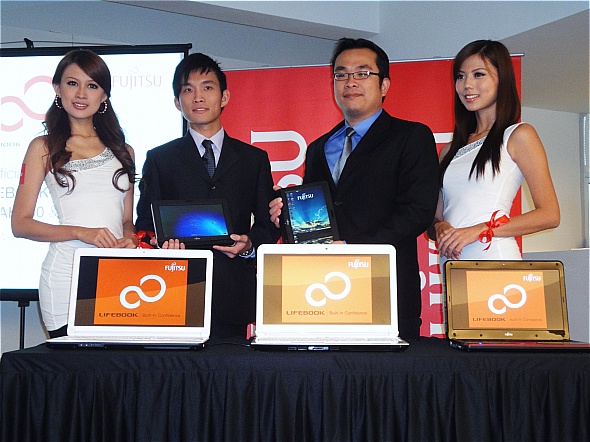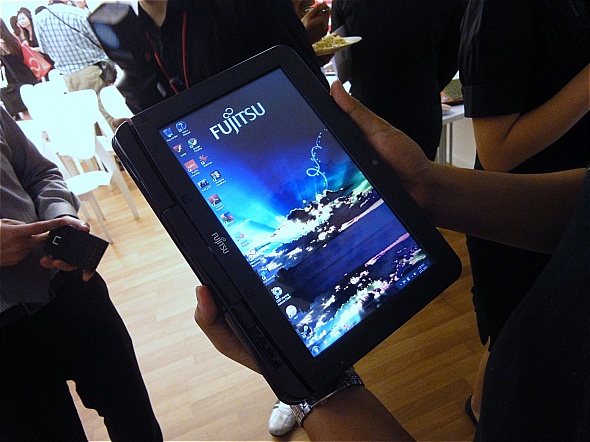If there's one thing that I recall more than any other from "Zero Hour," the 30-hour Xbox 360 launch event on November 20 and 21, 2005, it was the sight of dozens of gamers literally passed out on beanbags, their controllers still in their hands.
Despite absolutely frigid conditions, more than 2,000 gamers showed up in Palmdale, an aerospace town about an hour northeast of Los Angeles, for the chance to be among the first ever to play and buy an Xbox 360.
And after those 30 hours, their patience was rewarded: a fleet of Best Buy trucks rolled into the giant hangar where the event was taking place, and the Xboxes flowed.
The Xbox 360 turns 5 (photos)
Because my memories of that event are still so fresh, it's very hard for me to believe that it's been five full years since the launch of the Xbox 360--the release that heralded the first shot in the next-generation console wars among Microsoft, Sony, and Nintendo. The latter two companies would release their PlayStation 3 and Wii consoles a year later, in November 2006.
But back then, the PlayStation 2 was still the most dominant console on the planet, and no one had ever heard of the Wii. For its part, the Xbox 360 was an unknown--the original Xbox, released in 2001, had been a highly unprofitable loss leader, and now the world was waiting to find out if Microsoft was ready to be a real player in the console game.
And did they succeed? By almost any measure, they did.
"Microsoft has come such a long way," said Dean Takahashi, the author of "The Xbox 360 Uncloaked," and like me, one of only three reporters there throughout the Zero Hour event. "In planning the Xbox 360, they expected to get maybe 20 million units sold in five years. In fact, they were able to do more than 40 million. This console generation has worked out far better than they thought."
By comparison, according to an article Takahashi wrote last month for VentureBeat, where he is a lead writer, Nintendo has moved 74.6 million units to date, while Sony has sold 38.9 million PS3s.
Back then, in the fall of 2005, the question on everyone's mind was how the new Xbox would fare against Sony's PS3. After all, Sony had sold more than 100 million PS2s, and it was well understood that the PlayStation fan base gave Sony a huge advantage heading into the next-generation console wars.
But from the beginning, Sony stumbled, most visibly with supply chain issues that forced it to charge $600 for the PS3. And Microsoft, with its $400 Xbox 360, had no problem taking advantage of the PS3 fans who simply weren't willing to fork over $600.
Another area where Microsoft got an early lead was with its lineup of exclusive games. Indeed, the platform has helped spawn (or enhance) some of the biggest and most important exclusive titles in video game history--the Halo, Gears of War, and Fable franchises--and has seen titles available on multiple platforms tend to perform better on Xbox.
For their parts, the PS3 and the Wii have both had their share of blockbuster exclusives. PS3 players have had sole access to titles like the God of War and Gran Turismo franchises and those with Wiis were the only ones to be able to play New Super Mario Bros., Super Mario Galaxy, Wii Fit, and others.
Of course, back then, no one expected Nintendo's next-generation entry to be a real player. The thought was that it would be a battle for first place between the PS3 and the Xbox 360. Five years on, that seems like a quaint equation given the almost instant dominance of the Wii. Still, many people have long lumped the PS3 and the Xbox 360 together--given their high-quality graphics and immense processing power--and measured them more against each other and not against the Wii.
Impatient
If the new Sony and Microsoft console entrants were to be evaluated head-to-head, then Xbox has to be judged the winner, at least so far, despite its year head start. While the PS3 has had more success in the last year or so, the first few years of the console wars has seen the Xbox take a very big lead over Sony.
Now, with the release of its $150 Kinect motion controller, which sold more than 1 million units in its first 10 days, Microsoft is looking to solidify its position. Indeed, the company has said it now expects to sell 5 million Kinects this year alone.
Sony, of course, also has released a new motion controller, the Move, but Takahashi said that Kinect is already winning that battle. And while everyone initially wanted to compare both Kinect and Move with Nintendo's Wii-mote controller, it's hard to equate the different controllers because the base systems are so different.
But in spite of that success, some might caution Microsoft to move slowly with Kinect--and with the rest of the Xbox platform. One of the biggest failures in the five years of the Xbox 360 is indisputably the so-called "Red Ring of Death," which caused the consoles to crash or even die. Microsoft had to pony up for a $1 billion warranty program to cover potentially faulty Xboxes, a program for which many gave the company props, but to Takahashi, the history of the Red Ring of Death illustrates an area where the company should proceed carefully.
"The Red Ring of Death exposed one of the weaknesses in the strategy of moving too fast," Takahashi said. "If Microsoft is guilty of anything, it is sometimes too impatient when it comes to getting business results."
Takahashi said that it's for that reason that Microsoft has failed to become a player in the massively multiplayer online games business, and that to date, it doesn't match up with others like Zynga or Apple in social games, smart phones, or portable music players. With that in mind, he said, sticking to the Xbox platform might well be wise.
Microsoft was not able to respond for comment for this story.
Still, it seems clear that the company has bided its time with the Xbox 360--waiting out consumers who fretted about the console's lack of integrated Wi-Fi, or its small hard drive. As Michael Pachter, a video games industry analyst with Wedbush Morgan Securities put it, the Xbox 360 has "remarkable staying power" and "didn't get made obsolete after five years."
Indeed, Pachter said that the future of the Xbox franchise looks strong, precisely because of the Kinect. "They did a phenomenal job with Kinect," Pachter said, and "got people excited about it...That's the most exciting thing going on now."
Elite and Slim
In the past, it's been seen as a truism that each new console generation lasted about five years. And by that measure, it would be time for Microsoft to come out with an all-new Xbox.
Of course, no one expects that to happen any time soon, and the same is true of both Sony and Nintnedo.
But both Microsoft and Sony have found ways to come out with new iterations of their consoles--new versions that address things like missing accessories or too-high prices--along the way. In 2007, Microsoft released the Xbox 360 Elite, which offered a 120GB hard drive--up from 20 GB on the original--as well as an HDMI (High Definition Multimedia Interface) port, an HDMI cable and a wireless remote. This year, it went even further, bringing out the Xbox 360 Slim, which offers a 250GB hard drive. Yet the price has dropped over time to $300.
Takahashi said he originally thought that the PS3 would surpass the Xbox 360 in graphics quality and that gamers would respond by buying more PS3s. "But that advantage hasn't turned out to yield any benefits for Sony," he said. "If Sony has gained ground, it is because Microsoft wasn't ambitious enough in designing a slimmer version of its console."
Similarly, Microsoft is dominating its rivals in online services. Its Xbox Live service currently has 25 million members, and Pachter said 17 million of those are Gold members who pay $60 a year to take part in sophisticated multiplayer gaming and access a wide variety of social and multimedia content like Netflix streaming, A-list movies and TV shows, Twitter and Facebook, and more. And to Pachter, there must be something of value there because, he said, he heard very few complaints when Microsoft raised the annual price of membership from $50 to $60.
But Takahashi said that Kinect may well be Microsoft's best hedging against having to come out with an entirely new generation of console, something that may well not happen for at least two or three more years. "Kinect has certainly given [the Xbox 360] a mid-life kicker," Takahashi said. "I wasn't expecting that to happen and really thought that the company would have had to introduce a brand-new console by now."
For his part, Pachter doesn't think that's likely to be necessary for at least a couple more years.
Yet Pachter also wonders how Microsoft, Sony, and Nintendo have managed to keep the prices for their consoles so high, what with well-equipped Xboxes and PS3s still coming in at $300 each, and the Wii still selling for $200.
"If you'd told me in 2005 that (for the holiday season in) 2010, the three consoles would be $300 (for the core Xbox 360 Slim), $300 (for the core PlayStation 3) and $200 (for the Wii)," said Pachter, "I would have told you (that) you were on drugs. There's no way."




















